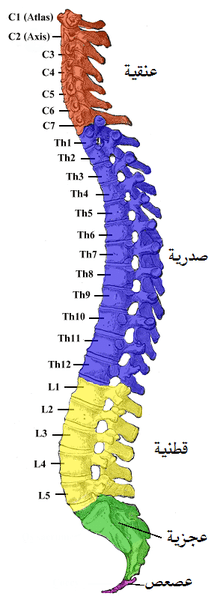Sep 13, 2019

Level(s) of the spinal column and number being fused
As you can see in the picture below, the human vertebral column consists of 33 vertebrae divided into five regions:
- Cervical—7
- Thoracic—12
- Lumbar—5
- Sacrum—5 (sometimes 6)
- Coccyx—4

Photo Courtesy: wikimedia.org
When reviewing the operative note, look for what level(s) are being fused together. A level involves two vertebrae and the space between them (interspace) containing the disc. In ICD-10-PCS, two adjacent vertebrae separated by an interspace (level) is call a vertebral joint.
How to report multiple levels?
When the surgeon documents that a fusion consisted of only two vertebrae, and they are of the same level (such as lumbar) then this is counted as only one level. However, in the same procedure if the surgeon also performs a fusion of another level (such as sacrum), this part of the fusion would also need to be reported.
Coding Examples
To view coding examples, purchase our Spinal Fusion Coding eBook.
Authored by Kim Boy, RHIT, CDIP, CCS, CCS-P
References
https://commons.wikimedia.org/wiki/File:Figure_38_01_07.jpg
https://www.spine.org/KnowYourBack/Treatments/Surgical-Options/Spinal-Fusion
https://idataresearch.com/how-many-instrumented-spinal-fusions-are-performed-each-year-in-the-united-states/
The information contained in this coding advice is valid at the time of posting. Viewers are encouraged to research subsequent official guidance in the areas associated with the topic as they can change rapidly.
Subscribe to our Newsletter
Recent Blogs
Related blogs from Medical Coding Tips
Complex coding scenarios often lead to delays...
Provider documentation is the foundation of a...
Accuracy is the foundation of quality coding....
The 2026 updates to CPT and the Hospital Outp...
Subscribe
to our Newsletter
Weekly medical coding tips and coding education delivered directly to your inbox.




